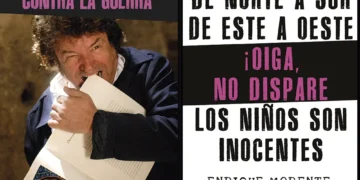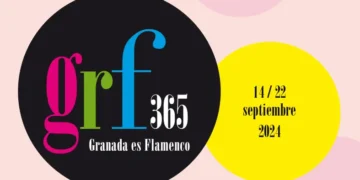|
Dulce Estrella |
|
SPECIAL BIENAL DE FLAMENCO DE SEVILLA 2008 Text: Gonzalo Montaño Peña Voice: Estrella Morente and Dulce Pontes. Guitars : Armindo Neves, Montoyita, Monti, Felipe Lucas. Oboe/ English horn: Oscar Viana. Percussion : Beto Betuk, Pedro Gabarre, Enrique Heredia. Viola Fado: Paulo Feitera. Chorus: Antonio Carbonell, Ángel Gabarre, Enrique Morente “Kiki”. It was one of the most anticipated shows of the whole Bienal, mostly because of the unusual combination. It isn’t every day you see a fado singer with a flamenco singer. We’d heard flamencos sing fado before, but never a fado singer doing flamenco, and that aroused tremendous curiosity. All doubts were quickly allayed. The two came out together, and behind them was a large group of first-class musicians. First, a Portuguese composition for the two voices, and you’d swear Estrella has been singing in Portuguese all her life. Their vocal texture is similar, and they complement each other perfectly. Then Estrella sings a toná, and Dulce responds with a street-vendor’s song from Portugal, but it was not an adequate comeback for the cante. If the flamenco singer knew how to adapt to fado, when the Portuguese singer had to turn the fado into flamenco it seemed more like she was “getting angry” at flamenco. It’s not my intention to doubt the professional capacity of Dulce Pontes, since that is beyond all possible doubt. Rather, it seems flamenco artists are accustomed to being versatile, dominating not one, but many cantes, putting them to work in other musical forms that harmonize with our art. But as soon as a singer from another genre tries to sing flamenco, the shortcomings become painfully obvious, even when it’s a prodigy like Dulce Pontes who is doing it. On her own, Estrella was fine, in her customary line and repertoire. Elegant and beautiful as always, she sang granaína accompanied by Montoyita on guitar, with rich harmonies and plenty of power. Morente also offered tangos from her hometown, and soleá in which she alluded to Juaniquí. For bulerías, she stood up to deliver her particular melodic style with classic cante. Dancing, she was seductive, and the closings reminded one of Scarlett O’Hara vowing never to be hungry again. Dulce Pontes returned to the stage, alone now, to show what she really is, a world-class artist. Accompanied only by a fado violin, a guitar and a bass, her voice was strong and sensual, her way of dancing and moving across the stage filled it completely, and the songs slipped from her throat like honey. Just as sweet as her name “Dulce” implies. But the classic song “Cançao do Mar” was missing, the people expected it. Some sounds of siguiriyas are answered with Portuguese lamentation, the percussion brings us sand, and the oboe, the Portuguese sea. The two divas squeezed their lungs in this precious composition that took us from the Algarve to the beaches of the Greek isles. Estrella and Dulce, Dulce and Estrella. Two women, two privileged throats that brought us the pleasure of their temperamental strength and beauty. |
Descubre más desde Revista DeFlamenco.com
Suscríbete y recibe las últimas entradas en tu correo electrónico.


 XV BIENAL DE FLAMENCO DE SEVILLA
XV BIENAL DE FLAMENCO DE SEVILLA 























